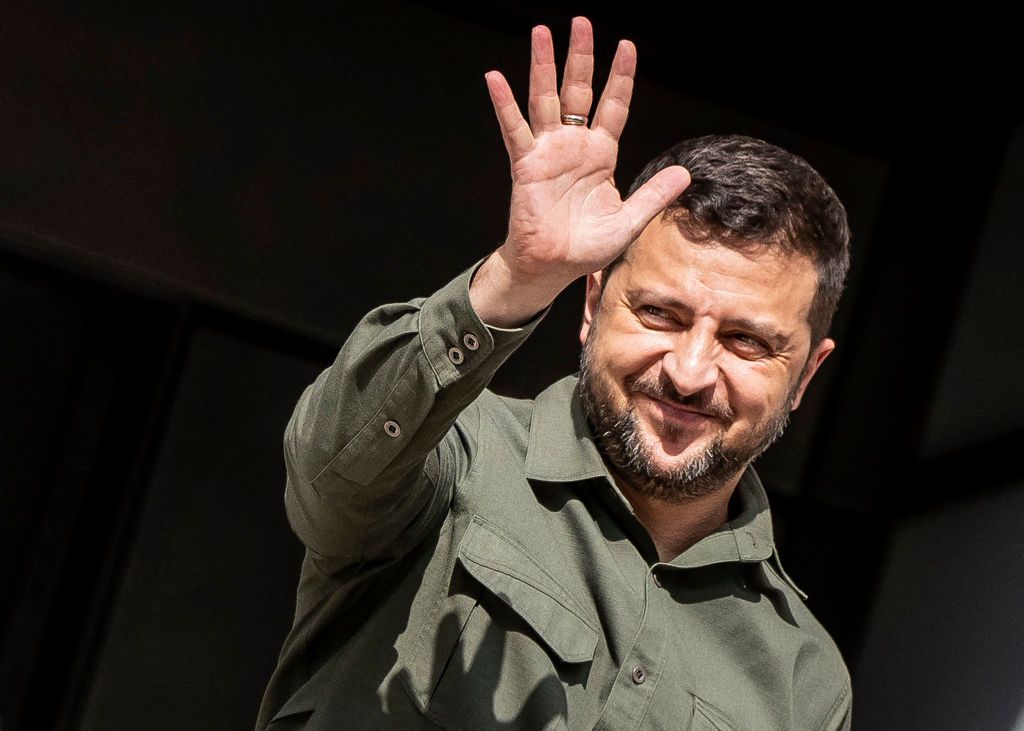
Opinion: Is Europe too big for further enlargement?
At a time of deep internal divisions and an increasingly volatile external environment, the giddy idealism of European Union enlargement seems a distant dream.
Georgian students protest the Russian-inspired "foreign agent" law in Tbilisil, Georgia, on May 14, 2024. (Giorgi Arjevanidze/AFP via Getty Images)

Ana Palacio
Former foreign minister of Spain
Earlier this month, the European Union celebrated the 20th anniversary of its biggest-ever enlargement, which brought 10 new members into the bloc. That event remains a potent reminder of the EU’s potential to advance peace and unity across the European continent. But, at a time of deep internal divisions and an increasingly volatile external environment, the giddy idealism of 2004 seems a distant dream, and the prospects of further enlargement appear uncertain.
The promise of EU accession has been long considered a powerful mechanism for strengthening stability, democracy, and prosperity across the continent. The addition of Portugal and Spain in the 1980s – democratic transitions in both countries – exemplified this dynamic.
But by 2004, when eight post-communist countries (and Malta and Cyprus) joined, not to mention the 2007 accession of Bulgaria and Romania, the logic of enlargement had shifted. Expanding the single market and fortifying the foundations of democracy across Europe were still critical objectives.
But by welcoming Central and Eastern European countries into the European “family,” the EU was also demonstrating that it had overcome its past of war and division. The EU’s new members, for their part, welcomed the chance to escape centuries of limbo between Russia and the West, even though Russia no longer seemed to pose much of a threat to its neighbors, at least in the eyes of the Union.
Today, with a war raging on Europe’s doorstep, there is no question that Russia is dangerous. Just four days after the full-scale invasion in February 2022, Ukraine applied for EU membership. Driven by a sense of moral responsibility, rather than genuine enthusiasm for further enlargement, the bloc quickly granted it candidate status. There are now nine recognized candidates for EU membership, mainly in Eastern Europe.
But, while the 2004 “Big Bang” was a success, it cannot serve as a model for future enlargement. Each accession brings its own challenges, which demand nuanced solutions. One key challenge today – which has undermined the old EU enlargement narrative – is democratic backsliding in some member countries.
Most notably, Hungary has clashed repeatedly with the EU over the anti-democratic policies pursued by Prime Minister Viktor Orban since he returned to power in 2010. In Poland, an Orban-emulating right-wing government was replaced last year by a three-party coalition committed to shoring up democracy, but tensions persist. Slovakia’s populist-nationalist prime minister, Robert Fico, was recently the target of an assassination attempt.
This trend has undermined EU-level decisionmaking, with national interests often trumping the will of the majority. For example, Orban repeatedly blocked EU support for Ukraine and has cultivated closer trade and investment ties with China at a time when other EU members are seeking to reduce their dependence on the Chinese market. Budapest was one of only three stops Chinese President Xi Jinping made on his recent trip to Europe, and he and Orban announced that their countries will form an “all-weather partnership.”

More broadly, the EU’s vision for the future – from its ambitious European Green Deal to its approach to migration – faces considerable resistance, dampening enthusiasm for further integration and enlargement. If the EU institutions are struggling to chart a common vision for 27 member states, how can they possibly accommodate as many as 36? After all, this new EU would not only be bigger; it would also be more diverse.
The enlargement debate has never been free of questions of geographical determinism. But, recognizing the geopolitical and economic advantages of wider membership, the EU sought to avoid potential conflicts not by excluding countries on geographical grounds, but rather by updating its accession policy to include conditionality. If a country wants to join the EU, it must meet certain standards in a range of areas, from minority rights to judicial independence. This helps to explain why Turkey’s accession process is indefinitely stalled, despite its candidacy being a geopolitical no-brainer.
Can Georgia, which applied for EU membership in 2022, prove more successful at meeting the conditions for EU membership? That now seems unlikely, judging by the government’s recent effort to enact a Russian-inspired “foreign agent” law requiring civil-society groups and independent media that receive more than 20% of their funding from abroad to register as organizations “bearing the interests of a foreign power.” Though the law was vetoed by President Salome Zourabichvili and, more importantly, sparked massive protests by a population that overwhelmingly supports EU accession, the government appears unmoved and is ramming the bill through.
Serbia is hardly in a better position. Though the country has been an EU accession candidate since 2012, only 33% of Serbians want to join, according to a 2023 survey. Xi also stopped in Belgrade during his recent European tour, signing an agreement to build a “shared future” with Serbia.
As for Ukraine, its ongoing war with Russia is not the only barrier to EU membership. Far-reaching economic and governance reforms would be needed to meet accession criteria. Moreover, the country’s vast agricultural sector has raised competition concerns among EU farmers.
If a new, larger EU is to function, creative solutions will be needed. Many have advocated a “multi-speed Europe,” in which member countries move toward integration at their own rate, with a set of vanguard countries leading the way. But in the absence of a common vision for the future – meaning different objectives, not just different capacities for integration – what is really needed is a “Europe of variable geometry,” which offers a more pragmatic approach to integration in the face of irreconcilable differences.
Today, the EU is at risk of becoming the chessboard on which struggles between the United States and China play out, rather than a player in its own right. How it navigates the enlargement debate – including its success in updating and streamlining decision-making – will help determine whether this risk materializes.
Editor’s Note: Copyright, Project Syndicate. This article was published by Project Syndicate on May 23, 2024, and has been republished by the Kyiv Independent with permission. The opinions expressed in the op-ed section are those of the authors and do not purport to reflect the views of the Kyiv Independent.











